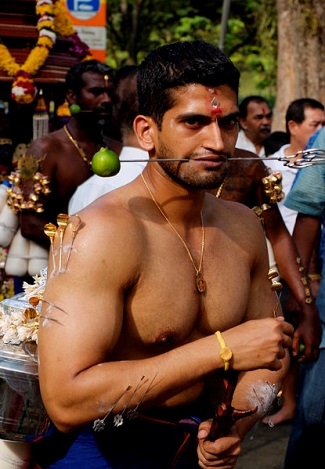Gendered Spaces in the Taipucam Festival, Singapore
January 30, 2018

How do religious festivities shape cultural perceptions of gender?
For a few days every year, between January and February, Little India becomes a site for the most celebrated Hindu festival in Singapore, Thaipusam. The streets are blocked for devotees to parade and chant verses for Lord Murugan. Such celebrations help to preserve Hindu traditions amongst Indian communities outside of India. But sometimes this comes at the cost of reinforcing outdated gender roles.
A/P Chitra Sankaran (Department of ELL), in a 2003 paper, Gendered Spaces in the Taipucam Festival, Singapore (Theatre Research International), describes how the centrality of the male body in the increasingly spectacular Thaipusam festivities marginalises the female devotee. During Thaipusam, male devotees carry their religious offerings in extravagant and heavy carriers. There is also a practice of sacrificial self-mutilation, with the intention of attaining a higher realm of spiritual awareness. The female devotee, on the other hand, merely walks beside the male devotee with a pot of milk. Focusing the rituals on the body of the male and leaving the female as a docile companion, implies that this attainment of a higher spiritual state is a privilege reserved only for men. These orthodox practices are increasingly at odds with today’s worldviews, particularly with respect to the spaces women occupy within and outside of religious institutions. Nevertheless, as globalisation threatens to homogenise cultures across the world, these rituals play an important role in preserving cultural diversity.
By providing a socio-historical background of the migration of Indians to Singapore, as well as a detailed account of Thaipusam and its origins, Sankaran sheds light on the links between religious practices and female empowerment.
Learn more about the study here.
